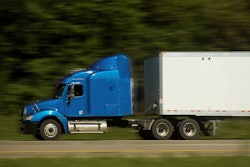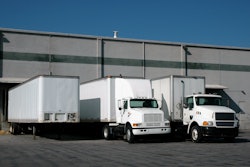The trucking industry forms the backbone of our supply chain, ensuring everyday life runs smoothly for hundreds of millions of people each year. However, in recent times, the trucking industry has been navigating a sea of challenges, with rising costs at the forefront. Amidst these turbulent waters, the industry's resilience and adaptability shine through. Trucking companies are not simply weathering the storm; they are harnessing it to drive innovation and progress, using every challenge as an opportunity for growth and reinvention.
Fuel costs
In the trucking industry, where fuel ranks among the heaviest operating expenses, the recent post-pandemic swell in fuel costs has triggered significant upheaval. Despite diesel prices retreating from their 2022 peak, they remain stubbornly high—a dollar more per gallon compared to early 2021. This surge, largely driven by geopolitical tensions like the war in Ukraine, has dramatically strained the financial structures of truckers and trucking companies alike. To navigate these turbulent economic waters, trucking companies are devising varied strategies to soften the blow of escalating fuel costs.
One approach that many have taken is to invest in fuel efficiency technologies. Trucking companies are no longer just streamlining the aerodynamics of their vehicles. They're delving into the realm of advanced engine designs and efficient tires, all in a bid to extract maximum mileage from each gallon of diesel.
Alongside these technological adaptations, telematics has emerged as a pivotal tool in fuel consumption optimization. The power of real-time data and analytics is being harnessed to guide fleet managers in overseeing driver behavior, vehicle performance, and route planning, all of which is culminating in substantial fuel savings.
In the long run, these strategies not only help reduce the operational costs for trucking companies but also contribute towards a more sustainable and efficient transportation industry.
Adapting to new regulatory landscapes
Regulation and oversight, while crucial to the trucking industry, can introduce new challenges, particularly when new mandates necessitate additional compliance costs and operational adjustments.
Often necessitating adjustments in equipment, procedures, and sometimes even business models, it’s not surprising that new regulations often come with a price tag. For instance, the introduction of stringent emissions regulations pushed many companies to upgrade their fleets with newer, cleaner models—a costly endeavor. However, these regulations also drive innovation, leading to the development of more efficient and environmentally friendly trucks. Electronic Logging Devices (ELDs), for example, have become indispensable tools, ensuring adherence to hours of service regulations and preventing driver fatigue.
While it's a delicate task to balance regulatory requirements with operational efficiency, it's a hurdle the industry is well-equipped to overcome.
Cost of goods and rising operational expenses
With the cost of many goods and services increasing across the country, the trucking industry isn't just grappling with fuel prices and regulatory compliance. There's also the pressing issue of rising operational expenses, including maintenance and insurance.
With fleets integrating more technologically advanced yet complex trucks, the sophisticated maintenance needs of these vehicles have driven costs upward. At the same time, trucking companies are grappling with surging insurance premiums, propelled by increased regulatory scrutiny and a rise in litigation related to truck accidents. These dual pressures of maintaining modern fleets and covering higher insurance costs underscore the financial challenges the industry must navigate.
To tackle these challenges, trucking companies are exploring new ways to optimize operational costs. A promising area of focus lies in predictive maintenance, which can prevent costly repairs and downtime by identifying potential issues before they become major problems. Some companies are also exploring partnerships with shippers to manage costs and increase overall operational efficiency.
These strategies signal a shift in the industry towards a more collaborative and data-driven approach in managing operational costs
Shaping the future of trucking
While the trucking industry has faced evolving challenges, it has also found new opportunities for growth and reinvention through technology. The adoption of innovative technologies is not just an option—it's becoming a necessity for survival and competitiveness. The integration of these technologies, however, is not without its difficulties, as it grapples with hurdles like substantial costs and advanced training requirements.
Yet, despite these challenges, the industry is showing remarkable resilience and adaptability. As it continues to embrace new technologies, the future of trucking is being reshaped. Businesses are exploring new models, and partnerships are being formed to drive industry transformation.
As the story of the trucking industry continues to unfold, its capacity to adapt, innovate, and persevere will continue to be critical. The industry's journey is a reflection of its enduring importance to the economy and its role as a driving force for change.












